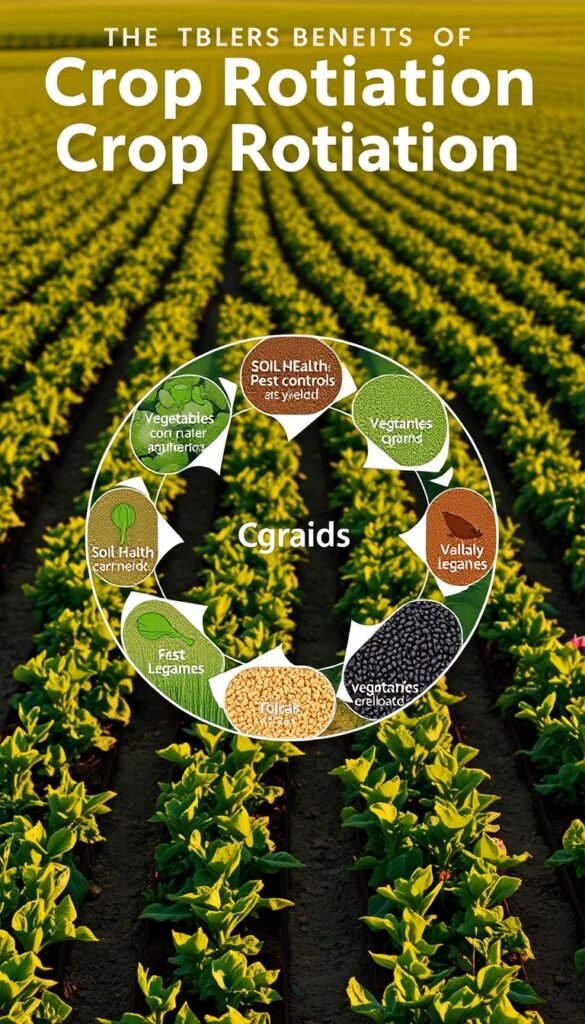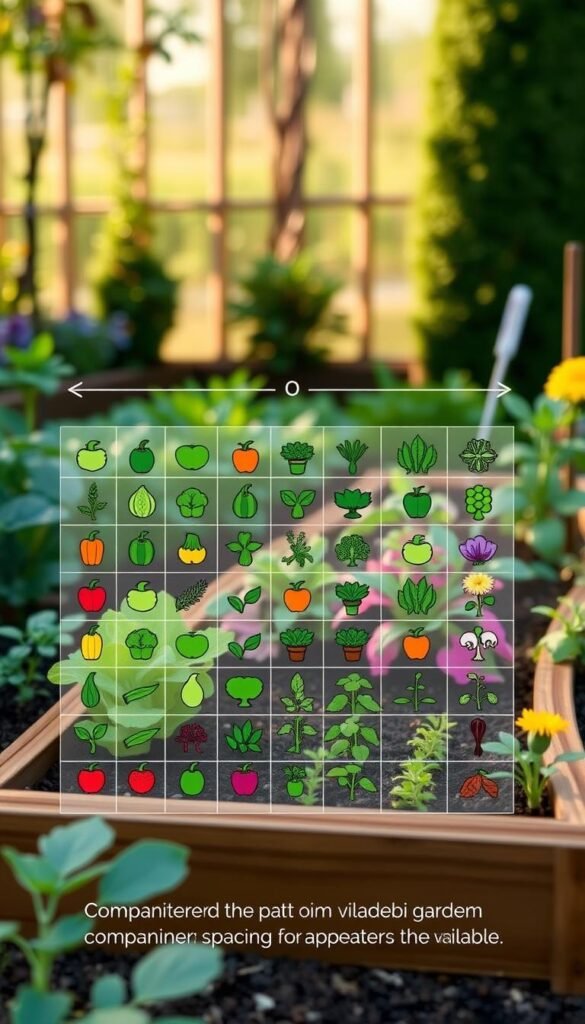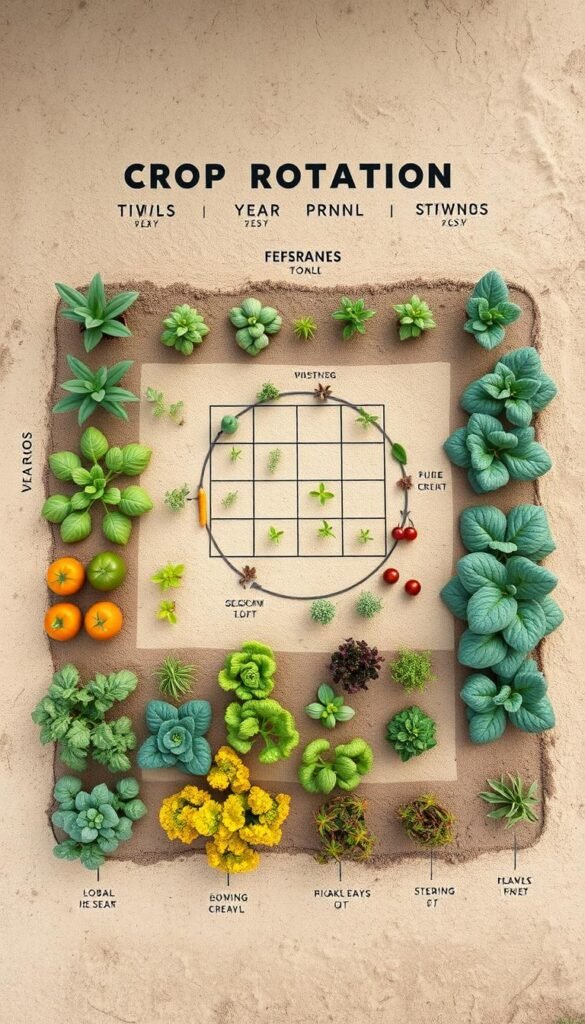Got a cozy garden but big dreams of fresh veggies all year? You’re not alone. Growing food in limited areas requires smart strategies, and one method stands out: switching plant families season after season. This approach stops pests and diseases from settling in while keeping your soil rich and ready to support new growth.
Think of your garden as a puzzle. Each piece (or plant family) plays a unique role. For example, tomatoes and peppers are heavy feeders, draining nutrients quickly. After harvesting them, planting beans or peas replenishes nitrogen naturally. This cycle keeps your soil balanced without chemical fertilizers.
Why does this matter? Repeating the same crops in one spot invites trouble. Pests learn where to find their favorite meals, and diseases linger in the soil. By rotating plant groups, you disrupt their routines and protect your harvests. Plus, diverse crops improve soil structure, making it easier for roots to grow and absorb nutrients.
Ready to transform your tiny plot into a year-round food factory? Let’s break down practical steps to plan rotations, pair compatible plants, and maximize every square foot.
Key Takeaways
- Switching plant families prevents pests and diseases from building up in your soil.
- Heavy feeders like tomatoes benefit from being followed by nitrogen-fixing plants.
- Soil health improves when different crops take turns using nutrients.
- Even small gardens can yield continuous harvests with strategic planning.
- Grouping plants by family simplifies rotation and reduces guesswork.
Introduction to Crop Rotation in Small Gardens
Ever wondered how to keep your backyard plot thriving without constant fertilizer boosts? The secret lies in shifting plant groups between growing seasons. This simple practice works like a natural reset button for your garden’s ecosystem.
What Is Crop Rotation?
Imagine giving each veggie family its own temporary home. You’d grow tomatoes in one bed this year, then move them next season while beans take their place. This location shuffle stops pests from setting up camp and keeps your dirt packed with diverse nutrients.
Why It Matters for Your Garden
Plants are picky eaters. Leafy greens gobble nitrogen, while root veggies mine deeper minerals. A smart rotation plan ensures no single nutrient gets drained completely. Studies show changing beds yearly reduces soil-borne diseases by up to 60%—no chemicals needed!
Even balcony gardens benefit. Try this: Pair tall plants like corn with low-growing basil. The corn shades the herbs while the basil deters pests—a perfect companion planting duo. Track your moves in a notebook or app, and watch how your soil health improves season after season.
Understanding the Benefits of Crop Rotation
Healthy soil is the foundation of every thriving garden, and crop rotation is its best friend. By switching plant families each season, you create a self-sustaining system that feeds your dirt as much as your plants. Let’s explore how this method transforms your garden’s health and productivity.

Improving Soil Health and Nutrient Balance
Different plants use nutrients in unique ways. Leafy greens like spinach drain nitrogen fast, while root vegetables like carrots pull potassium from deeper layers. Rotating these groups gives tired soil time to recover naturally.
Legumes like peas and beans are superstars here. Their roots host bacteria that convert air nitrogen into plant food. After growing tomatoes (heavy feeders), planting beans replenishes nitrogen levels without synthetic fertilizers.
| Crop Type | Soil Benefit | Example Plants |
|---|---|---|
| Legumes | Adds nitrogen | Peas, beans |
| Leafy Greens | Uses surface nutrients | Spinach, kale |
| Root Vegetables | Mines deeper minerals | Carrots, radishes |
Controlling Pests and Diseases Naturally
Insects and fungi often target specific plant families. When you move their favorite snacks yearly, pests lose their breeding grounds. Colorado potato beetles struggle if potatoes don’t return to the same spot for 3-4 years.
This approach also breaks disease cycles. Tomato blight spores overwinter in soil but can’t survive without host plants. Rotating crops starves these pathogens while letting beneficial microbes thrive.
Rotating Crops in a Small Space: Tips for Year-Round Harvests
Short on space but big on garden goals? Your compact plot can become a powerhouse with clever layout designs. The trick lies in treating every square foot like prime real estate—strategic placement and smart swaps keep your dirt working overtime.

Maximizing Limited Space Effectively
Start by mapping plant families across your beds. Group tomatoes, peppers, and eggplants together one season, then replace them with carrots or squash the next. This family-based approach simplifies tracking while preventing nutrient theft.
Legumes are your secret weapon. Bush beans or snap peas grow vertically, occupy minimal ground space, and inject nitrogen into tired soil. Tuck them between heavy feeders like corn or cabbage for instant soil revival.
- Stack seasons: Follow summer tomatoes with fall garlic—they occupy different soil layers
- Go vertical: Train cucumbers up trellises to free up planting zones below
- Double-duty crops: Radishes mature in 30 days, making them perfect gap-fillers
Urban gardeners report success with annual bed shifts. One web example shows tomatoes moving from east to west beds each year, followed by root vegetables that break up compacted soil. Another rotates lettuce patches with dwarf bean varieties that rebuild nitrogen between leafy crops.
Remember: Your garden’s layout is a living blueprint. Sketch plans each winter, noting where each plant family thrived. Over time, you’ll create a self-sustaining cycle that outsmarts pests and keeps your harvests rolling.
Creating a Year-Round Rotation Plan
Want fresh veggies every season but don’t know where to start? A smart rotation strategy turns your garden into a clockwork machine. Start by sketching your beds on graph paper or using free crop rotation basics templates. Label zones for plant families, not individual species—this simplifies tracking.

Mapping Out Your Garden Beds
Divide your space into numbered sections. Heavy feeders like tomatoes get Zone 1 in spring. By summer, Zone 1 shifts to light feeders like lettuce, while Zone 2 hosts nitrogen-fixing beans. This prevents soil exhaustion and confuses pests hunting their favorite snacks.
Planning for Seasonal Changes
Spring’s tomato plants leave behind tired soil. Follow them with fall garlic—a light feeder that grows deeper roots. Winter? Plant cover crops like clover to protect and nourish the earth. One urban gardener reported 30% fewer aphids after adopting this seasonal shuffle.
Maintaining Continuous Harvests
Keep your soil busy year-round with these swaps:
- After harvesting early radishes, plant bush beans
- Replace summer zucchini with frost-tolerant kale
- Slot quick-growing spinach between slow peppers
Track everything in a notebook: planting dates, pest sightings, and yield amounts. This record becomes your cheat sheet for predicting next year’s needs. Remember—rotation isn’t just moving plants. It’s building a living system where every season feeds the next.
Grouping Crops by Family and Nutrient Needs
Ever feel overwhelmed by keeping track of your garden’s changing needs? Simplify your strategy by sorting plants like teammates—each group plays a specific role in your soil’s health. Matching crops with similar nutrient demands makes rotations intuitive and effective.

Botanical Families Made Simple
Group plants like family reunions—keep relatives together but change locations yearly. Tomatoes and potatoes (both nightshades) share pests, so separate them next season. Brassicas like broccoli and kale thrive when following legumes, which leave behind nitrogen-rich soil.
Consider these key groups:
| Plant Family | Key Trait | Example Crops |
|---|---|---|
| Legumes | Add nitrogen | Peas, green beans |
| Brassicas | Heavy feeders | Cabbage, Brussels sprouts |
| Alliums | Pest repellents | Garlic, onions |
| Root Vegetables | Break up soil | Carrots, radishes |
Feeding Your Soil Smartly
Balance hungry plants with soil builders. After growing heavy feeders like corn, plant nitrogen-fixing beans to recharge the earth. Deep-rooted parsnips pull up minerals from below, while shallow lettuce uses surface nutrients—alternating them prevents depletion.
This approach also fights diseases naturally. Moving brassicas to new beds yearly stops clubroot fungus from gaining a foothold. One gardener reported 40% fewer pest issues after grouping tomatoes away from peppers for just two seasons.
Companion Planting and Space Optimization
What if your vegetables could work together like best friends? Companion planting pairs crops that boost each other’s growth while saving precious space. This method turns neighbors into allies—some repel pests, others share nutrients, and many fill gaps in your garden’s schedule.

Integrating Companion Crops for Mutual Benefits
Try this classic duo: potatoes and onions. Onions naturally deter Colorado potato beetles, while spuds shade onion roots from harsh sun. Studies show this pairing reduces pest damage by up to 40% compared to solo plantings.
Carrots and peas make another power team. Pea vines climb trellises, freeing ground space for carrot roots. As peas fix nitrogen in soil, carrots break up compacted earth below. One gardener reported 20% larger harvests using this method in raised beds.
Three quick wins for small spaces:
- Plant basil near tomatoes to repel hornworms
- Grow radishes between cucumbers to deter beetles
- Edge beds with marigolds to block root-knot nematodes
These partnerships create a living defense system. You’ll spend less time battling bugs and more time enjoying fresh produce—all while making every square inch count.
Seasonal Strategies: Spring, Summer, Fall, and Winter Considerations
Timing is everything when your garden dances through four seasons. Sync your planting schedule with nature’s rhythm to maintain soil vitality and outsmart pests. Let’s break down the year into actionable steps for non-stop growth.
Early Spring Preparation and Planting
Start with a soil test as frost lifts. Amend beds with compost where heavy feeders like corn will grow. Sow cold-hardy peas (a legume family star) to kickstart nitrogen production. Follow with quick-growing radishes between slower brassicas—they’ll mature before competing for space.
Adjusting Your Plan for Summer Deadlines
Rotate tomato beds to squash or beans by June. Try the Three Sisters method: corn supports pole beans, while squash shades soil. Monitor for pests weekly—handpick hornworms before they multiply. Plant fast-turnover crops like bush beans every 3 weeks for continuous harvests.
Fall Cover Cropping and Winter Storage
After harvesting corn, seed clover or rye to protect soil. These cover crops prevent erosion and add organic matter. Time carrot and beet pulls before hard frosts—store them in damp sand for winter use. Plan next year’s layout using colored markers for plant families on graph paper.
Seasonal shifts demand flexibility. Track frost dates, note which bean varieties thrived, and adjust spacing for vining plants. One urban grower boosted yields 25% by switching summer cucumbers with fall garlic in the same raised bed.
Leveraging Digital Tools and Record-Keeping
Juggling plant families and harvest dates in your head? Modern gardeners are swapping sticky notes for smarter solutions. Digital tools turn guesswork into precise plans, helping you track what grows where—and when.
Using Garden Planners for Rotation Tracking
Picture this: An app flashes a warning when you try to plant tomatoes in last year’s spot. Top garden planners use color-coded maps and rotation alerts to prevent mistakes. One study showed users reduced planting errors by 72% with these visual reminders.
These tools do more than organize. They analyze your harvest history to suggest ideal spring starters—like peas after garlic. Features like drag-and-drop beds let you test layouts before digging. Many apps even sync with weather data to adjust planting dates automatically.
Keeping a Detailed Garden Journal
Your phone isn’t the only tool. A simple notebook becomes powerful when you log:
- Exact planting dates for each crop family
- Soil amendments used between seasons
- Pest outbreaks and their locations
One gardener spotted a pattern: Aphids attacked kale every third spring in Bed 2. Rotating brassicas to Bed 5 broke the cycle naturally. Digital or handwritten, consistent records help you refine strategies year after year.
Ready to upgrade? Start with free apps offering printable maps or try a bullet journal with colored tabs for plant families. Your future self—and your soil’s health—will thank you.
Conclusion
Your compact garden holds more potential than you might think. By switching plant families and tracking seasonal shifts, you create a self-renewing system that feeds both your table and the earth. Those squash vines climbing last year’s tomato bed? They’re breaking pest cycles while their broad leaves shelter the soil.
Planning matters most in tight spaces. Alternate heavy-feeding greens with soil-building legumes each season. Shift root vegetables to new beds every 2-3 years to prevent disease buildup. Urban growers report 40% healthier harvests after adopting these simple swaps.
Keep notes as you experiment. Did garlic thrive where beans grew last fall? Did kale outsmart aphids in that sunnier corner? Your journal becomes the roadmap for years of abundant harvests.
Start small. Move just two plant groups this season. Watch how strategic changes protect your soil’s vitality and keep your kitchen stocked. With each thoughtful adjustment, you’re building a garden that grows better—and smarter—every year.






